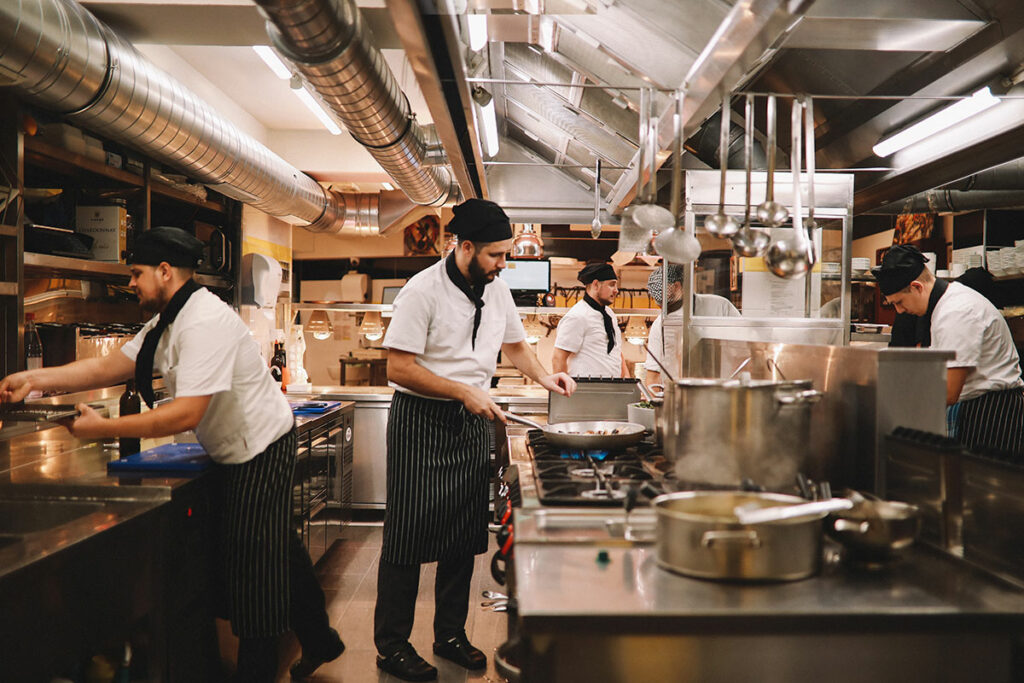
Consumers increasingly seek establishments prioritizing sustainability in today’s world, where environmental consciousness is top of mind. For restaurant owners, embracing energy efficiency not only contributes to a greener planet but also helps to reduce operating costs in the long run. This blog post will explore practical and effective strategies to make your restaurant energy efficient, enabling you to create a positive impact while improving your bottom line.
Conduct an Energy Audit
Begin by conducting a comprehensive energy audit of your restaurant. This assessment will help identify areas where energy is being wasted and provide a roadmap for improvement. Consider hiring an energy consultant or utility company to perform the audit or use online tools that provide guidance on conducting a DIY audit.
Upgrade Lighting Systems
One of the simplest and most cost-effective ways to reduce energy consumption and make your restaurant energy efficient is by upgrading to energy-efficient lighting systems. Replace traditional incandescent bulbs with LED lights, which use significantly less energy and have a longer lifespan. Additionally, install occupancy sensors or timers to automatically switch off lights in unoccupied areas, such as restrooms and storage rooms.
Optimize Heating, Ventilation, and Air Conditioning (HVAC) Systems
HVAC systems typically account for a significant portion of a restaurant’s energy usage. Implement the following measures to optimize efficiency:
- Regularly clean and maintain HVAC systems to ensure they run at peak performance.
- Install programmable thermostats to regulate temperature settings and avoid unnecessary energy consumption during off-peak hours.
- Utilize natural ventilation and invest in energy-efficient windows to reduce the reliance on air conditioning.
- Incorporate shades, blinds, or awnings to minimize heat gain from direct sunlight.
Get Efficient Kitchen Equipment
The kitchen is the heart of any restaurant and often the area with the highest energy consumption. To make your restaurant energy efficient:
- Invest in ENERGY STAR-certified appliances, such as refrigerators, dishwashers, and ovens, which are designed to consume less energy while maintaining optimal performance.
- Regularly maintain and calibrate kitchen equipment to ensure they operate at maximum efficiency.
- Opt for induction cooktops, which use electromagnetic energy to heat pots and pans directly, as they are more energy-efficient than traditional gas or electric stoves.
Conserve Water
Conserving water is another crucial aspect of energy efficiency. Implement the following practices to minimize water waste:
- Repair any leaky faucets or pipes promptly.
- Install low-flow faucets, aerators, and pre-rinse spray valves to reduce water consumption without compromising functionality.
- Use a dishwasher instead of manual dishwashing, as modern dishwashers tend to be more water efficient.
Cut Down on Waste
Efficient waste management practices contribute not only to environmental sustainability but also to energy efficiency. Implement the following steps:
- Implement a comprehensive recycling program throughout your restaurant.
- Compost food waste and use it to enrich the soil in a nearby garden or donate it to local farmers.
- Minimize food waste by accurately measuring ingredients, training staff on portion control, and offering smaller portions for certain dishes.
By adopting these energy-efficient practices, your restaurant can become an example of sustainable dining while reducing operating costs. Not only will you save money on utility bills, but you will also attract environmentally conscious customers who appreciate your commitment to the planet. By making small changes today, you can positively impact the environment and contribute to a greener, more sustainable future for the food service industry.
Interested in how UGI EnergyLink can help you protect your bottom line? Contact us today!